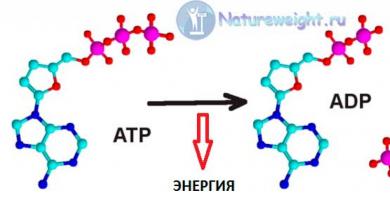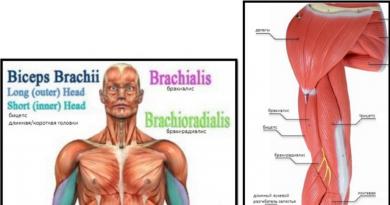One of the trace elements necessary for the normal functioning of the human body is iron. It is present in the composition of proteins (myoglobin, hemoglobin, etc.), various enzymes. The functions of iron are the binding of oxygen and its transportation to organs and tissues, the impact on metabolism, participation in the processes of hematopoiesis.
This metal enters the body with food. Absorbed in the duodenum.
The human body in certain periods experiences an increased need for iron - such periods are the period of growth, menstruation, pregnancy.
General information about iron preparations
Ascorbic acid improves iron absorption.So, iron in medicines is contained in different forms - bi- and trivalent. Ferrous iron preparations are absorbed and absorbed by the body much better than their ferric counterparts. Preparations of ferrous iron are usually used orally, and trivalent - by intravenous injection.
In order for the iron-containing preparation to be absorbed as best as possible in the digestive tract, it is necessary that there is a certain amount of free hydrochloric acid in the stomach. This implies the need to prescribe simultaneously with the iron preparation of gastric juice in case of insufficient secretory function of the stomach, concomitant anemia.
Some substances, entering the body simultaneously with iron, enhance its absorption. Among these substances are ascorbic and succinic acids, cysteine and fructose. A number of other compounds, when taken with iron, reduce its absorption. Among them are calcium salts, phosphoric acid, tannin and some drugs - almagel, tetracycline. The use of these substances directly while taking an iron preparation should be avoided.
As mentioned above, a direct indication for the appointment of iron supplements is iron deficiency anemia of any etiology. Of course, the primary point in its treatment is to eliminate the cause that caused the decrease in the level of iron in the body, but the subsequent goal is to restore this level and create a microelement depot that was previously wasted. Iron-containing drugs can also be used for B 12 deficiency anemia in parallel with taking cyanocobalamin. One condition: B12-deficiency anemia must be hypochromic (color index in the general blood test is less than 0.8).
Iron preparations for oral administration
In the vast majority of cases of iron deficiency anemia, iron preparations are recommended to be taken orally. The therapeutic dose of the drug is prescribed individually at the rate of 2 mg/kg of the patient's body weight. As a rule, it is 100-200, less often - 300 mg per day. To achieve the maximum absorption effect, drugs of this group are taken exclusively during meals.
With a sufficient dose of the drug, changes are observed in the blood test already a week after the start of treatment - the number of reticulocytes increases. A month later, in some cases later - after 1.5–2 months, an increase in hemoglobin values is noted. The improvement of the condition, which is manifested by the disappearance or decrease in the severity of symptoms of anemia unpleasant for the patient, he notes after a few days of regular use of the drug.
Patients should know that it is necessary to take drugs of this group not for one or two weeks or even a month, but much longer. After the normalization of hemoglobin and red blood cells, the course of treatment with an iron-containing preparation continues in order to replenish iron stores in the body - so to speak, to fill the depot. This continues for several - at least 2 - months, but the dose of the drug is supportive: less than the therapeutic dose by 2 times.
Against the background of taking iron-containing preparations per os (i.e., inside), the following side effects may develop:
- metallic taste in the mouth;
- nausea;
- vomit;
- loss of appetite;
- or (less commonly) diarrhea.
In some cases, against the background of taking iron preparations, it is noted associated with the formation of iron sulfide in the case of interaction of iron with hydrogen sulfide in the oral cavity (for example, with). To avoid this unpleasant effect, you should thoroughly rinse your mouth after taking iron-containing drugs or take them through a tube (if the drug is in a liquid dosage form).
Taking iron supplements is contraindicated in the following cases:
- with hemolytic and;
- with chronic inflammatory diseases of the liver and kidneys;
- with blood tumors - leukemia;
- in parallel with taking tetracyclines or antacids;
- in combination with foods rich in calcium, containing caffeine or high in fiber.
Carefully prescribe drugs of this group for,.
Iron preparations are not prescribed simultaneously with drugs that reduce the acidity of gastric juice, and with antibiotics of the tetracycline and D-penicylamine groups, since they prevent the absorption of iron in the digestive tract.
Preparations containing iron
- Hemopher prolongatum. The active ingredient is also ferrous sulfate. Release form - coated tablets, weighing 325 mg, which is equivalent to 105 mg Fe 2+.
- Tardiferon. Tablets of prolonged action with iron sulfate (II) in the base plus mucoproteosis and ascorbic acid. 1 tablet contains 80 mg Fe 2+ .
- Ferrogluconate and Ferronal. The basis of the preparations is ferrous gluconate. Release form - tablets of 300 mg, which is equivalent to 35 mg of Fe 2+.
- Ferrogradum. Ferrous sulfate plus a plastic matrix - gradumet. Release form - coated tablets. The amount of Fe 2+ in 1 tablet is 105 mg.
- Heferol. The drug is based on fumaric acid. Available in the form of capsules of 350 mg, which is equivalent to 100 mg of Fe 2+.
- Aktiferrin. Combined preparation containing ferrous sulfate, D, L-serine (capsules and oral drops) and ferrous sulfate, D, L-serine, glucose, fructose, potassium sorbate (syrup). The amount of mg Fe 2+ in 1 capsule/1 ml of drops and 1 ml of syrup is 34.8 and 34.2, respectively.
- Gemsineral-TD. Microgranules of ferrous fumarate, folic acid, cyanocobalamin. Capsules containing 67 mg of elemental iron.
- Gino-tardiferon. Contains ferrous sulfate, folic and ascorbic acids, mucoproteosis. It is produced in the form of tablets, the dose of elemental iron in which is equivalent to 80 mg Fe 2+.
- Globiron. It contains iron fumarate, vitamins B6, B12, folic acid, sodium docusate. Available in the form of gelatin capsules of 300 mg, which is equivalent to 100 mg of Fe 2+.
- Ranferon-12. Contains iron fumarate, ascorbic and folic acids, cyanocobalamin, zinc sulfate, iron ammonium citrate. It is produced in the form of capsules of 300 mg, which is equivalent to 100 mg of elemental iron and an elixir, 5 ml of which contains 41 mg of it.
- Sorbifer durules. Ferrous sulfate plus ascorbic acid plus a matrix - durules. Coated tablets with prolonged release of iron ions containing 100 mg Fe 2+ .
- Totem. Iron gluconate plus trace elements - manganese, copper, as well as sodium benzoate and citrate and sucrose. The dosage form is a solution for oral administration in 10 ml ampoules, which is equivalent to 50 mg Fe 2+.
- Heferol. The base is fumaric acid. Release form - 350 mg capsules containing 100 mg Fe 2+.
- Fenyuls. Iron sulfate, folic and ascorbic acids, thiamine, riboflavin, cyanocobalamin, pyridoxine, fructose, cysteine, calcium pantothenate, yeast. Release form - capsules, the iron content in which is equivalent to 45 mg.
 Injection of iron preparations can lead to serious complications, therefore, it is used according to strict indications.
Injection of iron preparations can lead to serious complications, therefore, it is used according to strict indications. Iron preparations for parenteral administration are used only if there are certain indications, such as:
- reduced absorption of iron in the digestive tract associated with its chronic pathology (enteritis, malabsorption syndrome);
- exacerbation of peptic ulcer of the stomach or duodenum;
- nonspecific ulcerative colitis;
- individual hypersensitivity to iron salts;
- removal of the stomach (gastrectomy) or extensive resection of the small intestine;
- the need for rapid saturation of the body with iron during upcoming operations for, and other pathological conditions.
More than 100 mg of iron per day cannot be injected by injection - this dose ensures complete saturation of transferrin with it.
With parenteral administration of iron-containing preparations, a number of serious complications may develop:
- allergic reactions up to anaphylactic shock (occur in 1-2% of patients, usually after intravenous administration of the drug);
- DIC;
- infiltrates at the injection site;
- abscesses at the injection site;
- phlebitis;
- an overdose of iron with the subsequent development of hemosiderosis of organs (deposits of hemosiderin (consisting of iron oxide) in the tissues of internal organs).
Iron-containing preparations for parenteral administration
- Venofer. Consists of iron (III) - hydroxide of sucrose complexes. Produced in the form of a solution for injection in ampoules of 5 ml. The route of administration of the drug is intravenous. 1 ampoule contains 100 mg Fe 2+ (20 mg/ml).
- Zhektofer. Contains iron-sorbitol-citric-acid complex. Release form - solution for injection in ampoules of 2 ml. The route of administration is intramuscular. 1 ampoule contains 100 mg Fe 2+ .
- Ferbitol. It is based on the iron sorbitol complex. Produced as a solution for injection of 1 ml. The route of administration is intramuscular. 1 ml of solution is equivalent to 50 mg Fe 2+ .
- Ferrlecit. The active substance of the drug is an active sodium-iron-gluconate complex. Solution for injection, available in ampoules of 1 (for intramuscular injection) and 5 (for intravenous administration) ml, containing 50 and 100 mg of Fe 2+, respectively.
- Ferkoven. It consists of iron saccharate, cobalt gluconate and carbohydrate solution. Available in 1 ml ampoules containing 20 mg Fe 2+. It is administered intravenously.
- Ferrum Lek. The active ingredients are iron hydroxide with dextran. For intramuscular administration, it is produced in 2 ml ampoules, where the content of elemental iron is equivalent to 100 mg.



